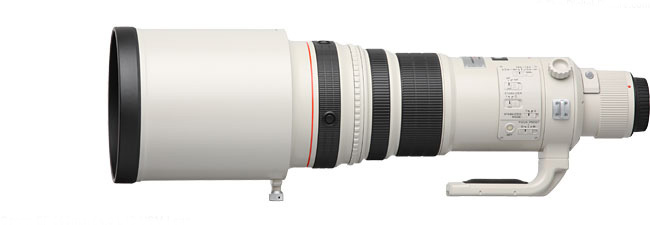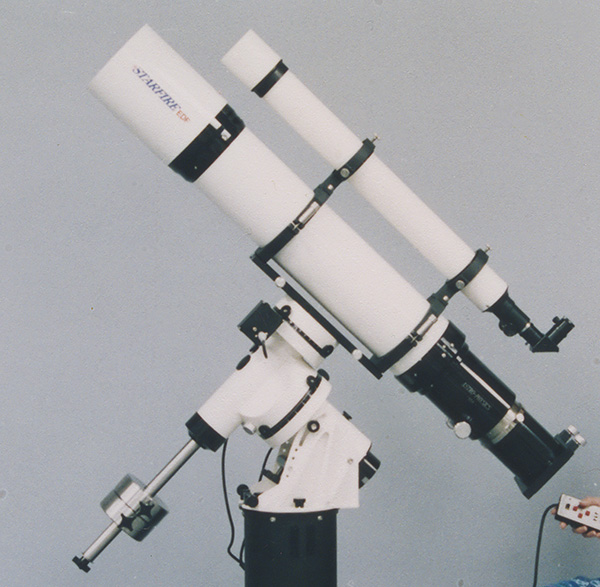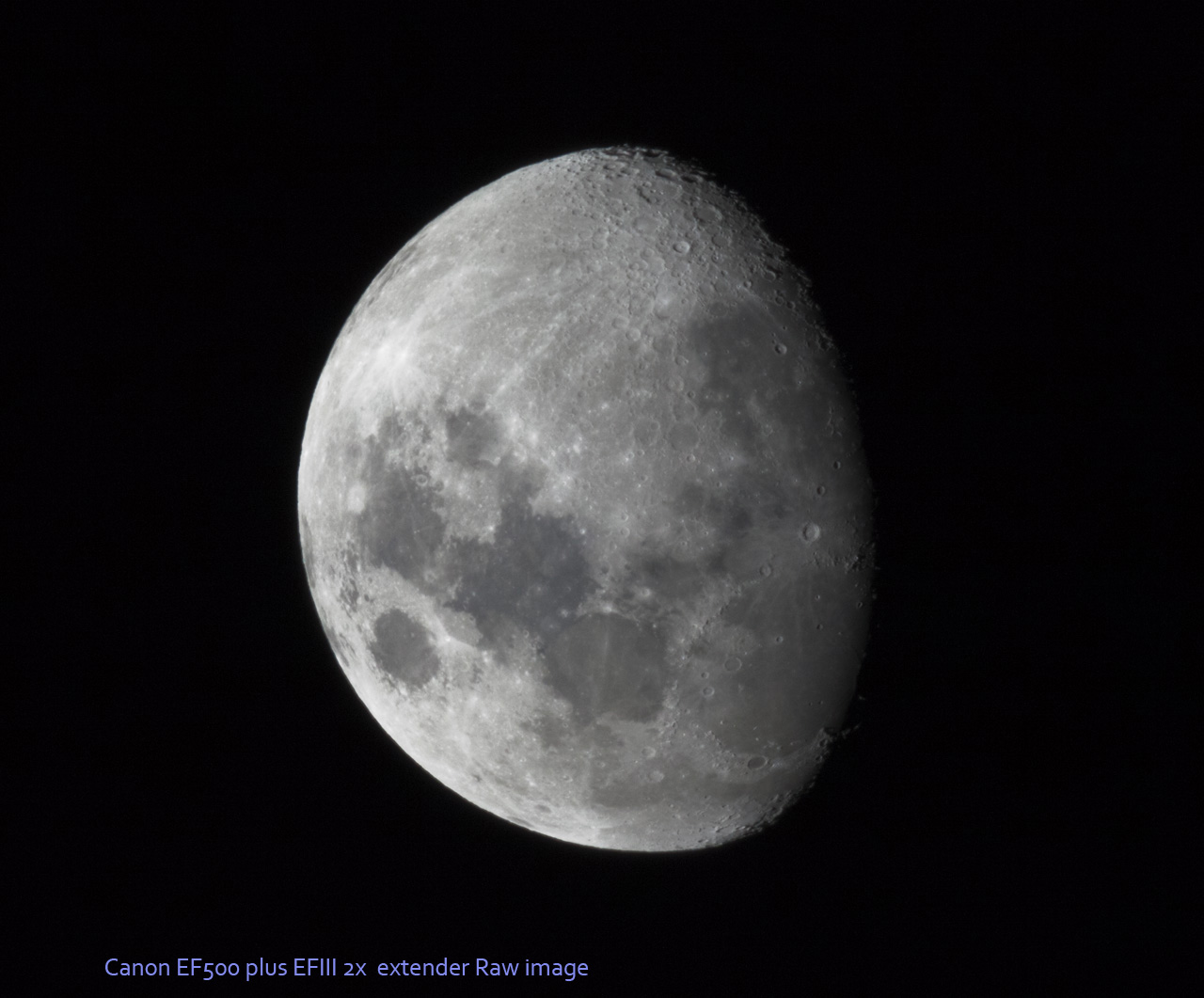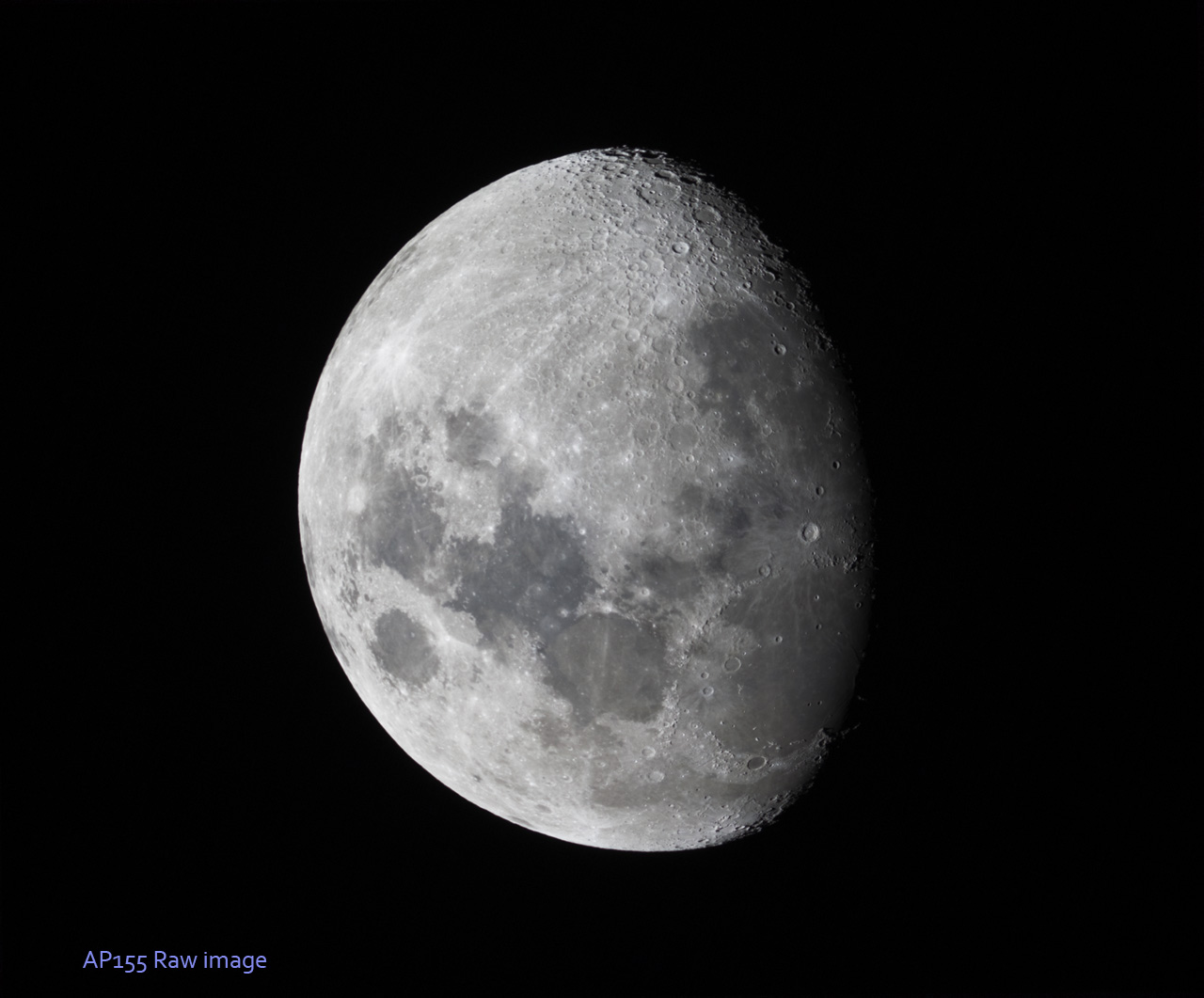Canon 500mm L series F4 vs Astro-Physics 155mm F7 (copyright P.J. Ward 2011)
An opportunity came up some years ago for me to acquire a Canon L-Series 70-200mm F2.8 zoom, which pretty much had me hooked on Canon L-series lenses... you know, the white barrels that seem to be a permanent fixture in the press gallery at all major sporting events.....
The latest addition being one of Canon's uber telephoto's, used by professional sports & wildlife photographers around the planet, the L-Series, 500mm F4. These lenses are not inexpensive. Expect to part from around $A 5000 to $A 11,000 for good condition used to new versions.
In so far as telescopes optics are concerned, some names are simply revered by all those who have had the opportunity to enjoy the view through these particularly fine instruments. Takahashi, TMB and last, but certainly not least, Astro-Physics.
Two standouts from their range appeared in the 1990's. At a time when nearly all refractors were F9 to F12 behemoths , Astro-Physics introduced the AP 130mm F6 and AP155 F7 that literally changed the refractor world, as they were half the size yet had significantly better performance than almost everything else on offer.
The original AstroPhysics AP155 had a glass element that, in an e-mail I received in 2007 stated:
"...... used the Nasa glass which had an abnormal dispersion that allowed the color correction to be much better than a normal refractor lens.
However, over time the Ohara FPL52 and FPL53 glass types (ED glass) became available. This allowed AP to make oil spaced triplet lenses with better overall color correction than the original Nasa glass Christen Triplets. The new lenses were called EDT and EDF lenses. The oil spacing made F7 and F6 lenses possible with no problems of decentering and collimation which can cause problems in fast airspaced ED triplets.
Today, there is no more availability of the older Nasa type glasses, so all apo lenses are now made from either ED glass or fluorite crystal.
Roland Christen"
This now "unobtanium glass" was used in early AP155 oil spaced refractors...later models, including the EDF tested here used synthetic fluorite or FLP53.
Price? With a 4" focuser and field flattener in 1998 the new price was $US 6400.00 , but as they are no longer in production and highly sought after, 2nd hand prices have risen almost triple that for well looked after AP155's.
Some specs:
Canon EF L-Series 500 Astro-Physics AP155 Aperture 155mm F ratio F4 (F8 with 2x tele-extender) F7 Focal length 500mm (1000mm with EF 2x tele-converter) 1085mm
Lens design 13 groups of 17 lenses 3 lenses, oil spaced triplet objective, 2 element field corrector, 4" corrected field Weight 3.87 kg 12.3kg
Obviously the focal length of the Canon 500mm literally comes up a little short compared to the AP155. Thankfully Canon have recently released their EF III 2x tele-converter, which extends the reach of the EF500 to within 10% of the AP155. Canon claims it adds few, if any, aberrations to the 500mm's optics. I'd also have to agree.
But the downside is the extended F-ratio (F8) becomes higher than the F5.6 required by many Canon camera bodies for the auto focus to work. Focus was done using the Live-view mode of the Canon 5dMk II, which subsequently was not that easy to get spot on. Even the slightest touch of the barrel was sufficient to shift the focus a fraction, with the image below being the best of several attempts.
Camera lenses are for the most part, intended for daylight use that can easily mask less than perfect optics. Astronomical subjects often cause them grief.
Pointed at the night sky, many camera lenses show colour errors (or chromatic aberrations or CA ) as violet or blue halos around stars or high contrast edges, such as the lunar limb. That said, the Canon EF 500mm is superbly colour corrected, with no discernable CA. Other errors such as coma etc were not tested for, but I'm happy to report the lens does deliver round stars at the edge of a 35mm field, as opposed to the small "comets", "blobs" or "seagulls" that I have seen other photographic lenses transform stars into.
The AP155 is a different bird. It was designed from the ground up to image the heavens. Features such as image stabilization, variable f-stop and autofocus...all essential for sports or nature photography are nonexistent....but are also superfluous features for this large lens intended to be aimed squarely at the stars.
The 10:1 feather touch focuser made nailing focus a straightforward process. The lens is sublimely corrected to work at infinity and it does that pretty much to perfection. Stellar images are perfectly circular dots and average 15-20 microns to the edge of a 5 degree field (the scope was originally designed to cope with 6x7cm film)
The image of the moon below was taken using a Canon 5d MKII and EF 500 with the EF III 2x extender. The RAW file was unsharpened and has only a minor gamma curve correction. Note the superb colour correction at the lunar limb.
Next is the moon, taken just a few minutes later, through the AP155. Again a Canon 5d Mk II and unsharpened RAW image file. The image was re-scaled slightly to match the 1000mm FL of the Canon lens. Image contrast is noticeably higher
Finally a mouse-over of the two images. The AP image will appear when your mouse cursor is placed on the image
Some conclusions.
Canon have done an exceptional job in the EF 500mm F4. Very few camera lenses provide this level of sharpness, particularly when wide open. The AP155 has fewer lens elements and is optimized to work with large format film using its full aperture at infinity, as a result the AP is a significantly sharper optic.
While being a modestly fast F7, AP155 portability is still best described as "luggability" and it requires a very large mounting. Taking this telescope to a dark site presents an interesting logistics challenge.
The Canon will easily fit into an Airliner's overhead locker, mounts on a modest tripod, making it a very tempting choice for eclipse chasers. But ultimately a super-telephoto lens is not a super telescope and vice-versa .... No surprises there!



